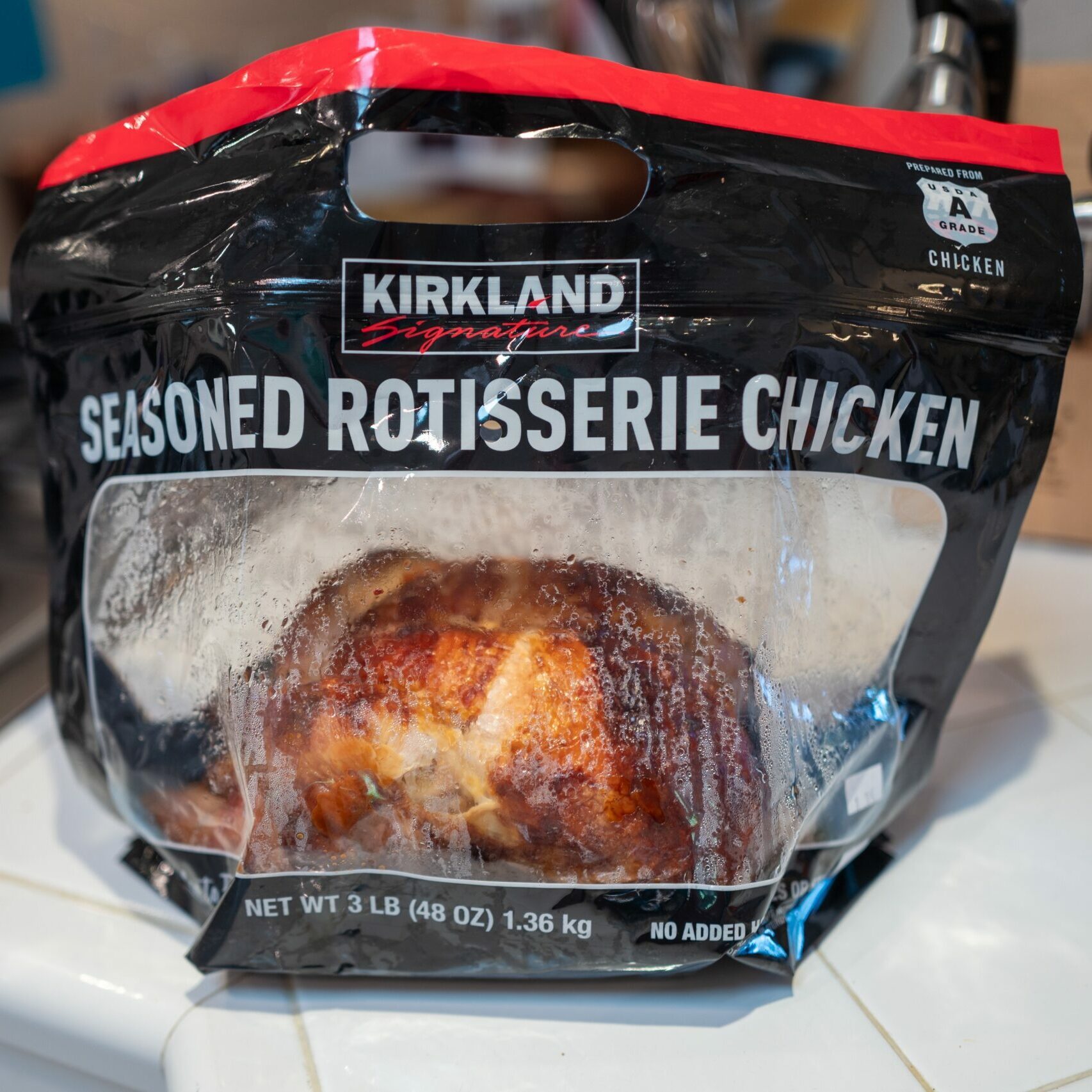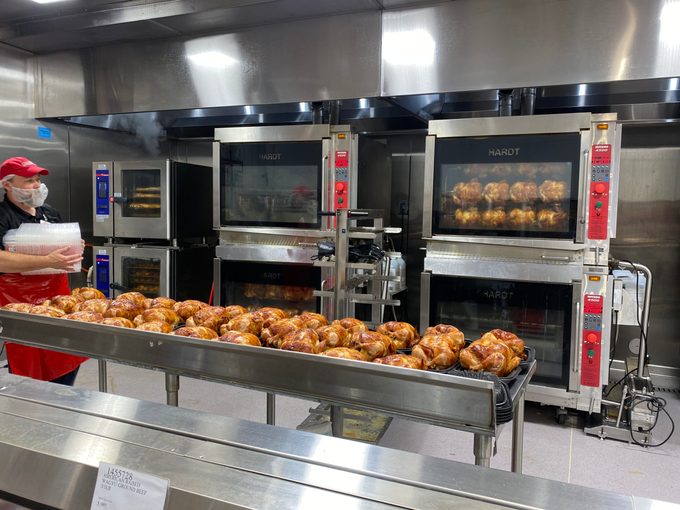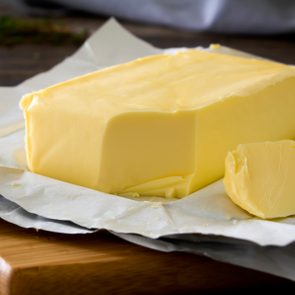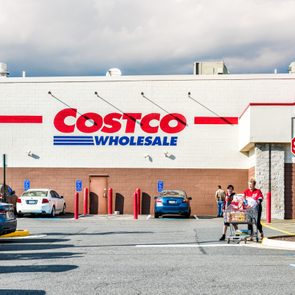Ever wonder what makes the Costco rotisserie chicken so popular?

The Secrets Behind Costco’s Famous $4.99 Rotisserie Chickens

Let it be said that the rotisserie chicken is a ubiquitous shopping-cart staple. It makes enjoying a hot, fresh meal so very convenient—no matter whether you’re slicing it, shredding it or cubing it. But the $4.99 Costco rotisserie chicken? Well, that, my friends, is in a league of its own.
This isn’t necessarily because it’s the best-tasting rotisserie chicken—though frequent Costco shoppers are likely to argue it is—but because it has defied inflation for decades. And, really, what other grocery item has the same bragging rights?
Costco keeps its prices low overall, but that chicken is kept at $4.99 with intention and strategy in mind. Here’s how and why.
Get Reader’s Digest’s Read Up newsletter for more Costco news, humor, cleaning, travel, tech and fun facts all week long.
Does Costco still have $5 rotisserie chicken?
You better believe it, and, actually, the price is technically $4.99. In fact, it has been $4.99 since the year 2000, with a very brief sojourn to $5.99 during the financial crisis of 2008. But Costco brought that price right back down to $4.99 in 2009. That’s one of the things that makes Costco so beloved—the company will actually lower prices on certain items whenever they can.
In the case of the rotisserie chicken, it’s the very definition of a loss leader. Essentially, a loss leader is a product that a store sells at a super low price—usually less than what it costs the store to buy wholesale or make—in an effort to get more foot traffic in the store. The idea is that if you come in to get a great deal on that rotisserie chicken, you’ll stay and add other things to your cart.
“Costco’s profitability is derived from their membership fees,” says Reilly Newman, a brand strategist at Motif Brands. “With this in mind, we can see how tactics like their rotisserie chicken as a loss leader work to not only provide value to their members but also increase shopping behavior.”
Costco’s rotisserie chickens are always in the back of the store for a reason

Most grocery stores keep their eggs and milk at the back of the store, and it’s for the same reason you’ll never find Costco rotisserie chickens at the front of the warehouse. That would make it way too easy for shoppers to grab their $4.99 dinner and skedaddle out of there, spending nary a cent more.
“As Costco strategically places the chicken at the back of each warehouse, they nudge members to shop,” Newman says. “Costco is known for its higher cost per cart compared to the industry average, as Costco members spend significantly more per cart.”
Costco sells a lot of rotisserie chickens
The most recent stat on Costco rotisserie chickens comes from a 2023 shareholder’s meeting during which reps for the company said they sold an astonishing 137 million chickens that year. And that’s 20 million more than they sold in 2022. Now, we’re just hypothesizing here, but if sales followed that same trajectory in 2024, that means Costco could be up to 157 million chickens sold annually.
“The important note here is that Costco has wisely focused on improving members’ experiences with the brand,” Newman says. “These loss leaders quickly pay for themselves through increased transactions as well as member retention and satisfaction.”
Yes, Costco really loses money on rotisserie chickens
It’s been a while since Costco’s head honchos confessed to just how much money the company loses annually by keeping the price of its rotisserie chickens at $4.99. Ten years ago, a rep for the company estimated they were losing $30 million to $40 million on the product every year. But with the number of chickens sold in warehouses rising exponentially each year and inflation bearing down on most everything, that estimation is likely a lot higher today.
But Rose Sioson, founder of Deliciously Rushed and an avid Costco shopper, thinks Costco more than makes up for it just by getting customers through the door for that value chicken.
“Costco may technically lose money on each rotisserie chicken they sell, but trust me—they’re not losing when it comes to what I buy next,” Sioson says. “That chicken usually ends up in a cart with salad kits, ready-made mashed potatoes, a bottle of wine, maybe a dessert and some random item I had zero intention of buying. It’s classic Costco strategy.”
Costco rotisserie chickens can be on display for only two hours
When you’re reaching for that bagged rotisserie chicken from the warming display, know that it’s been sitting there for two hours or less. That’s Costco policy. Once it hits the two-hour mark, the chicken is pulled from the display, typically shredded and then used in other prepared Costco foods. This is to ensure freshness and keep customers happy (because a dry $4.99 chicken doesn’t seem like a great deal, does it?).
But don’t worry, there’s no waste here. You’ll see that chicken pop up in Kirkland Signature Rotisserie Chicken Noodle Soup or the Kirkland Signature Chicken Alfredo with Penne Pasta. And guess what? Both of those items will set you back more than $4.99.
And if you want to make sure you get the freshest chicken possible, listen for a bell. Costco employees will tell you the ringing of the bell means a new delivery of rotisserie chicken.
Some say the rotisserie chickens taste like chemicals
Everyone’s a critic, am I right? But seriously, there are those naysayers who detect a chemical aftertaste while dining on one of these rotisserie chickens … and they’re actually not totally incorrect.
No, Costco doesn’t overprocess its rotisserie chicken, but the brine injected into the chickens prior to cooking does contain phosphate. Why does a brine need phosphates? According to the American Meat Scientist Association, they improve the texture of the meat and keep it juicy. Unfortunately, in those instances when too much phosphate is added, it can produce an off-putting taste.
The rotisserie chicken has a cult following at Costco
It’s true—the majority of what you’ll find online when you search “Costco rotisserie chicken” are accolades. Reddit threads celebrate its very existence and answer questions about it for Costco newbies. And if they’re really selling more than $137 million of these things every year, clearly Costco is on to something.
“While Costco might be eating the cost on that $4.99 bird, they’re easily making it up with all the high-margin snacks, prepared sides, seasonal goodies and those giant bags of chips I somehow always end up with,” Sioson says. “Chicken in one hand, samples in the other—it’s all part of the Costco experience that keeps me coming back for more.”
Additional reporting by Juliana LaBianca.
About the experts
|
Why trust us
At Reader’s Digest, we’re committed to producing high-quality content by writers with expertise and experience in their field in consultation with relevant, qualified experts. We rely on reputable primary sources, including government and professional organizations and academic institutions as well as our writers’ personal experiences where appropriate. We verify all facts and data, back them with credible sourcing and revisit them over time to ensure they remain accurate and up to date. Read more about our team, our contributors and our editorial policies.
Sources:
- The Seattle Times: “Hot dogs and chickens by the millions: Just how big was Costco’s 2023?”
- Costco: “Minimizing Waste”
- American Meat Science Association: “Marination and Brining of Poultry Products: Value Added”






















